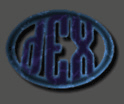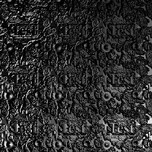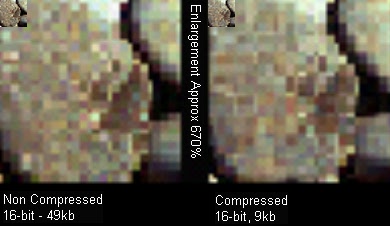 | ||||||||||||
|
 |
|
As Sega readies its next console, code named 'Katana', many people have been curious as to how the system will compare to the company's Model 3 based arcade offerings. Simply put: Extremely well. At the heard of the console's graphics system is the chip developed by NEC and VideoLogic, dubbed PVRSG. PVRSG actually refers collectively to the second-gen PowerVR lineup which consists of five setups, each with a different target market. Thus far, all public demos of the technology have been PC based and look very promising. Those who have seen the chipset state that the speed and graphic quality is beyond any of the competitor's offerings (mainly 3Dfx and NVidia). Note: The quality of the screenshots has degraded some due to JPEG compression artifacts.
Its Different
Let's first begin with what makes the PowerVR architecture special: Its Z-Buffer system. So what exactly is a Z-buffer? In 3D graphics the Z-axis represents depth. The question lies in, what objects are in front of each other? The computer needs to answer the question, Can I see objectA or is objectB in front of it? Z-buffering is a method in which such information is kept. This information is then used to decide what polygons to draw, and which ones to omit. The problem is that a Z-buffer needs memory: the more objects, higher the resolution, and higher precision (16/24/32bit) requires a larger z-buffer. The beauty of the PVRSG is that its design makes it unnecessary for any Z-buffer memory. The chip itself calculates the Z-axis position for polys internally with 32-bit floating point math. As an example of memory requirements, the standard 32-bit z-buffer alone would require a minimum of 1.2MB of memory at 640x480 resolution (1.2MB can escalate much higher with overdraw and Z-buffer checking). 1.2MB of memory isn't that bad, but when you factor in additional memory requirements for RGB and alpha channels, plus buffering, that 1.2MB becomes a significant chunk of memory that is needed elsewhere. The zero memory overhead is only one benefit. The other is reduced bus bandwidth necessary to move that data around. Lower bus bandwidth also reduces costs quite a bit...an important factor for consoles.
Performance Enhancements
The Second-Gen moves beyond the previous PCX1/2 chipsets in many ways. Performance is about doubled, or more. Its also much less CPU dependent, as the PVRSG chip has more built in functions to offload calculations from the CPU. The chip includes a full 32-bit floating point geometry and texture setup engine (vs. the fixed math of PCX1/2). Its performance does scale with CPU power fairly well. With an P2-333MHz system, the chip can do about 1.2 million front facing, lit, textured, shaded, Z-buffered, polygons per second. Peak perfomance is about 4million polys per second. However, polys-per-secnd rating varies on many things, such as texture size, polygon size, resolution, etc. Its peak fill rate compares to 150 mega pixels per second in standard 3D technology. Another way of saying this level of performance: 1024x728 @ 60fps with overdraw (drawing same pixel multiple times) and 25% translucancy uses about 59mpps.
 In hardware bump-mapping is a relatively new feature at this end of the market. Bump-mapping is the process in which a greyscale image is converted into varying height values. Essentially an elevation map for the object; which is used to give it a nice surface without adding any polygons. Of course, the PVRSG chip does this nicely on-chip.
In hardware bump-mapping is a relatively new feature at this end of the market. Bump-mapping is the process in which a greyscale image is converted into varying height values. Essentially an elevation map for the object; which is used to give it a nice surface without adding any polygons. Of course, the PVRSG chip does this nicely on-chip.
 Another great feature is on-chip texture compression. Since texture memory will be limited (rumors place the console with 8MB of texture RAM), the ability to compress textures is very helpful in reducing memory overhead and allowing for more textures to be loaded at once. The chip allows for up to 8:1 lossy compression. An example of this is taking a 128x128 16bit texture (49kb) and with 5.3:1 compression it is reduced to only 9kb. The only disadvantage is that compression takes a little time, then again, textures can be pre-compressed letting the chip only have to deal with decompression which takes much less time...
Another great feature is on-chip texture compression. Since texture memory will be limited (rumors place the console with 8MB of texture RAM), the ability to compress textures is very helpful in reducing memory overhead and allowing for more textures to be loaded at once. The chip allows for up to 8:1 lossy compression. An example of this is taking a 128x128 16bit texture (49kb) and with 5.3:1 compression it is reduced to only 9kb. The only disadvantage is that compression takes a little time, then again, textures can be pre-compressed letting the chip only have to deal with decompression which takes much less time...
All products are trademarks of their respective companies.
Questions or comments? Contact dEX.